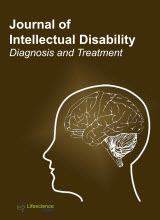jiddt
|
|
Abstract: In the last decades of the 21st century, the problem of a significant increase in the number of children with disorders in mental and somatic development has become particularly acute. Often there are neurotic conditions caused by the influence of various psycho-traumatic factors: the growth of scientific and technological progress and related changes in all areas of human life activity. In this regard, shifts occurred in the structure of the incidence among the population towards an increase in the proportion of diseases associated with nervous and psychic overstrain. One of the most vulnerable age groups is children of preschool and primary school age. Untimely diagnosed neurotic disorders in children, as a rule, turn into protracted forms of neurotic conditions and subsequently become chronic. This, of course, affects the adaptation of the individual in society and the further quality of life. Keywords: Preschool children, neurosis, pre-neurosis, anxiety, heart rate variability, sympathetic and parasympathetic nervous system.
|
|
|
Abstract: Objective: The purpose of this article is to analyse consumers' psychological perception of antibacterial drugs use (ABD). For this purpose, the authors conducted a study in the form of a survey among patients, doctors and pharmacists. Keywords: Antibiotics, treatment, prescription drugs, drug prescription, free purchase of antibiotics.
|
|
|
Abstract: Background: Since serum uric acid is a controllable and modifiable factor in diabetic patients, identifying the risk factors and accelerating the incidence of neuropathy in these patients plays an important role, and can reduce its level, and the patient's disability, as well as additional therapeutic costs for the patient and the health system in the country. Keywords: Diabetes Mellitus, Polyneuropathy, Uric Acid.
|
|
|
Abstract: Objective: The study aimed to explore the work-life balance concept, assessing the level and the peculiarities of work-life balance. Keywords: Work-life conflict, work-life enrichment, social and psychological strategies, relationships.
|
|
|
Abstract: Background and Objective: Given that a small percentage of people with ischemic stroke are treated with recombinant tissue plasminogen activator (rtPA) in Iran, it is necessary to use appropriate educational methods that, in addition to raising the awareness of patients about stroke, lead them to refer health centres early. The purpose of this study was to evaluate the effect of new methods of training warning signs of acute stroke on thrombolytic therapy. Method: This was a community-based empirical intervention study in Ahvaz, Iran, in 2018. Initially, educational content was provided, including warning signs of a stroke, its risk factors, and the need for prompt referral to a well-equipped treatment centre for thrombolytic therapy. This content was used to prepare brochures, pamphlets, posters, and training sessions for health care personnel. Before starting, immediately, and three months after the training course, a questionnaire was used to assess staff knowledge of stroke symptoms and the need for rapid patient referral for FAST-based thrombolytic therapy. Also, the timely referral of patients with suspected stroke to hospital, as well as their thrombolytic therapy during the six months after the intervention and the similar six months in the previous year were compared. Results: The level of knowledge was significantly increased at the end of training (P<0.0001). Although this average was reduced three months after completion of training, the difference was not significant (P = 0.42). Based on the results, the number of stroke patients referred to hospital in golden time (less than 4.5 hours) from the beginning of training to 6 months after the end of the course (n = 54) was increased compared to the same period last year (n=38). The number of thrombolytic patients from the beginning of the training course to 6 months after the course (n=38) increased compared to the same period of the previous year (n=21). Conclusion: Based on the results, the implementation of educational programs was reported to be effective in raising public awareness of stroke symptoms and the need for prompt hospital referral for appropriate and timely treatment. . Keywords: Ischemic stroke, Thrombolytic therapy, Educational programs.
|


